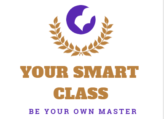Heterogeneous classrooms, where students with varied abilities, backgrounds, and learning needs come together, are a hallmark of inclusive education. They present unique challenges and opportunities for educators to foster an environment where every student can excel. This article delves into effective provisions for heterogeneous classrooms, ensuring no learner is left behind.
Understanding Heterogeneous Classrooms

A heterogeneous classroom comprises students with diverse:
Learning abilities: Gifted learners, average students, and those needing additional support.
Cultural backgrounds: Students from varied ethnicities and traditions.
Socio-economic statuses: Differing access to resources and opportunities.
Learning styles: Visual, auditory, kinesthetic, and more.
Creating provisions to address these differences is essential for fostering equity and inclusion.
Key Strategies for Provisions in Heterogeneous Classrooms
1. Differentiated Instruction
Tailoring teaching methods to suit individual student needs is critical. This can include:
Flexible groupings: Allowing students to work in varied peer groups.
Customized assignments: Offering tasks of varying complexity based on students’ abilities.
Multiple instructional approaches: Using lectures, hands-on activities, and digital tools to engage different learners.
2. Universal Design for Learning (UDL)
UDL principles help create adaptable learning experiences:
Representation: Presenting content in multiple formats like text, videos, and interactive media.
Engagement: Encouraging participation through relatable examples and collaborative tasks.
Expression: Allowing students to demonstrate knowledge in diverse ways, such as essays, presentations, or art projects.
3. Collaborative Learning
Encourage teamwork to leverage peer-to-peer learning:
Peer tutoring: Students assisting each other in specific subjects.
Group projects: Fostering teamwork among students of varied skills.
Class discussions: Promoting diverse perspectives and critical thinking.
4. Individualized Education Plans (IEPs)
For students requiring additional support, IEPs are invaluable. These plans outline specific goals, accommodations, and support mechanisms tailored to individual needs.
5. Culturally Responsive Teaching
Acknowledge and incorporate students’ cultural backgrounds into the curriculum:
Incorporate diverse materials: Literature, examples, and case studies from different cultures.
Celebrate cultural events: Foster understanding and appreciation of various traditions.
6. Effective Classroom Management
Maintain a structured yet flexible environment:
Clear expectations: Establish and communicate rules and routines.
Positive reinforcement: Recognize and reward good behavior and effort.
Conflict resolution: Address issues promptly and constructively.
Role of Technology in Heterogeneous Classrooms
Technology can bridge learning gaps effectively:
Assistive tools: Screen readers, speech-to-text applications, and language translation apps.
Adaptive learning platforms: Software that adjusts difficulty based on student performance.
Interactive resources: Gamified learning apps and virtual simulations.
Importance of Professional Development
Teachers play a pivotal role in managing heterogeneous classrooms. Ongoing professional development ensures educators are equipped with:
Current teaching strategies.
Awareness of new tools and technologies.
Skills to address diverse student needs effectively.
Conclusion
Provisions in heterogeneous classrooms are not just about addressing challenges but celebrating diversity. By implementing strategies like differentiated instruction, UDL, and culturally responsive teaching, educators can create an inclusive environment where every student thrives. Embracing these practices not only enhances academic outcomes but also fosters empathy, understanding, and lifelong learning skills.
Share this:
Discover more from YOUR SMART CLASS
Subscribe to get the latest posts sent to your email.








